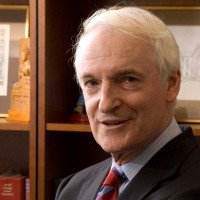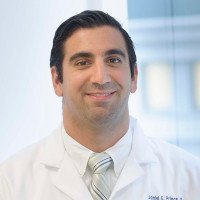MSK Kids pediatric orthopedic surgeons care for kids with cancers such as osteosarcoma and Ewing sarcoma. An orthopedic (OR-thuh-PEE-dik) surgeon is a doctor with special training in surgery on the musculoskeletal system. This includes the bones, joints, tendons, and muscles.
Children and teens are not just small adults. Their bones are still growing. Our orthopedic surgeons use cancer treatments designed around a growing arm or leg.
Children also are more active than most adults. They want to play sports and take part in other physical activities.
At MSK Kids, these are the things our orthopedic surgeons think about when they plan surgeries for children with bone cancer. We create a treatment plan that meets your child’s needs while giving them the best chance of beating cancer.
Why choose MSK Kids for pediatric bone cancer surgery
MSK’s team of experts in orthopedic surgery
MSK Kids’ pediatric oncologic (cancer) orthopedic surgeons are very experienced in all procedures for pediatric bone cancer. We also have many surgeons with special training in subspecialties. For example, we have surgeons who only operate on the hands and arms. Patients at hospitals that do a higher number of surgeries often have better treatment results.
Our orthopedic surgeons work closely with other experts. They include medical oncologists (cancer doctors) and radiation oncologists (doctors with special training in using radiation to treat cancer). As a team, they choose the best treatments and will talk with you about options for your child.
The latest surgical methods
Our surgeons do operations to help limbs keep growing and make new bone. Your child’s body can regrow bone after part of a bone is removed during surgery. This is called bone regeneration, the process of forming new bone tissue.
MSK Kids orthopedic surgeons are experts in the latest amputation methods. Amputation is when a body part is removed during surgery. Our surgeons are also experts in implanting (putting in) artificial limbs called a prosthesis (pros-THEE-sis). Also known as a prosthetic or an implant, these fake limbs can help improve your child’s quality of life.
We support your child’s activities
If your child wants to take part in athletics, we do all we can to keep their body working well. We will talk with you about all treatment options so you can make the best decision. For some children, that could mean taking advantage of the latest advances in amputation. This can sometimes be a better option than limb-preserving surgery (surgery to keep a limb).
Types of pediatric bone cancers MSK treats
MSK Kids treats more young people with osteosarcoma (OS-tee-oh-sar-KOH-muh) and Ewing sarcoma than any other center in the country. We care for children with many other muscle and bone cancers, and with benign tumors and cysts that are not cancer. They include:
- Rhabdomyosarcoma (RAB-doh-MY-oh-sar-KOH-muh), a rare childhood cancer that starts in muscles.
- Fibrosarcoma (FY-broh-sar-KOH-muh) in infants and children. This cancer starts in the fibrous tissue in muscle and around bones.
- Chondrosarcoma (KON-droh-sar-KOH-muh), a bone cancer that starts in cells that make cartilage.
- Osteochondroma (OS-tee-oh-kon-DROH-muh) and other hereditary bone spurs (exostoses) that are not cancer. These common abnormal (not normal) growths form near the growth plates at the ends of long bones.
- Chondroblastoma (KON-droh-blas-TOH-muh), a benign (not cancer) bone tumor that starts in the ends of the long bones.
- Hemangioma (hee-man-jee-OH-mah) of the bones and soft tissues. These benign (not cancer) tumors are made of blood vessels. We treat them when they cause pain or other symptoms.
- Aneurysmal and unicameral (simple) bone cysts, which are sacs filled with blood or fluid. They’re not cancer, but we may treat them to prevent bone damage.
Types of pediatric orthopedic surgeries MSK does
3D custom prosthetic implants
MSK surgeons have one of the best track records in the world for implanting prostheses. We use 3D devices that look like a bone. They’re built just for each child and last a long time. We put them into the bone after we remove the tumor.
Our joint replacements and devices can be made to get longer as a child grows. If a child wears out their prosthesis, our surgeons are skilled in replacing these devices.
Limb lengthening methods and osteogenesis
MSK Kids surgeons in New York City are leaders in limb lengthening surgery for children with bone cancer. We use a method called distraction osteogenesis (OS-tee-oh-JEH-nih-sis), which can make a bone longer.
Our surgeons remove the part of a bone with the tumor. They cleanly cut the ends of the bone and then stretch it out. This tricks the body into thinking there’s a fracture and starts the healing process. The bone can heal itself by making new bone that’s strong and healthy.
In this procedure, a surgeon implants a metal rod into the bone. The rod can be made longer using a magnet. It can also be controlled with a special device that a parent or caregiver can adjust. The adjustment is made with a dial and lengthens the bone by 1 millimeter each day. The remaining bone makes new bone, which bridges the gap over time.
This treatment is not right for everyone. Your surgeon will let you know if it’s an option for your child.
Osseous integration after amputation
Osseous integration, also called osseointegration, is a bone cancer treatment for children who must have an amputation. MSK surgeons will remove the limb and put in a metal rod that extends (comes out) from the skin. A prosthesis (fake limb) can easily be snapped onto the rod.
It’s easier for a child to have a prosthesis that snaps on and off than a regular prosthesis. It’s an excellent choice for some children who need an amputation higher on the leg, above the knee.
This method is better than regular amputation prostheses that have bulky sockets. As your child grows, their arms and legs change shape. That means we must remake their prosthesis socket. But with osseous integration, there’s no need to remake the area where we attach the prosthesis. This method lets your child’s body work better for a longer time.
Rotationplasty for kids
MSK Kids in New York City is one of the few centers offering rotationplasty (roh-TAY-shun-PLAS-tee) for children with cancers near the knee. Children who have a rotationplasty often can still play sports and do many other normal activities. Rotationplasty is an alternative to the usual method of amputation.
Our surgeons will remove part of the leg just above and below the knee, without harming blood vessels and nerves. They will turn your child’s lower part of the leg by 180 degrees (halfway) and attach it to their thigh. This lets your child’s ankle joint act like their knee joint. The final step is to add a prosthesis onto the foot.
Pediatric spine and pelvis surgery
Pediatric cancers in the spine and pelvic bone are complex. They’re among the hardest to treat with surgery. The MSK Kids orthopedic surgery team includes experts with special training in pediatric spine and pelvic cancer surgery. They’re very experienced in surgeries on the anatomy of the spine, with spinal reconstructions that last a long time.
The team uses minimally invasive surgery methods when possible. Minimally invasive means the surgery uses fewer incisions (cuts) and does less harm to the body.
Learn more about osteosarcoma and Ewing sarcoma care at MSK Kids.
Meet MSK’s pediatric orthopedic surgery team

Attending Surgeon

Assistant Attending Surgeon

Attending Surgeon

Stephen McDermott Chair in Surgery

Chief, Orthopaedic Surgery Service; Jack Byrne Chair for Adolescent and Young Adult Cancers at Memorial Sloan Kettering Cancer Center

Associate Attending Surgeon

